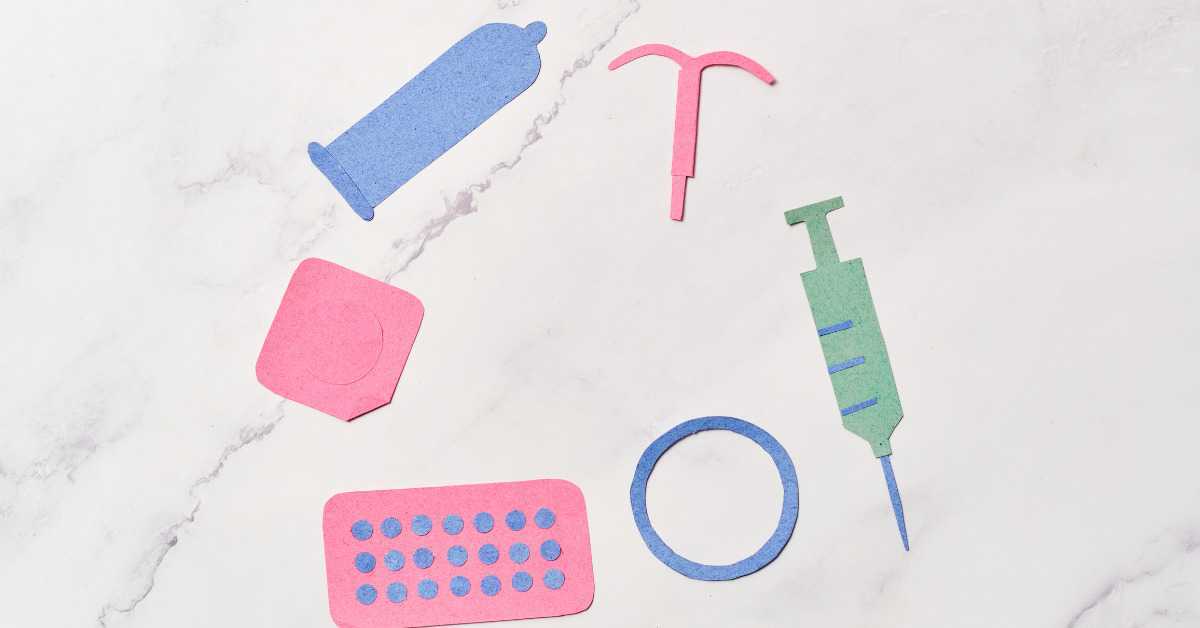There are many different types of birth control methods available and it can be difficult to decide which one is best for you. The most common types of birth control are the pill, patch, ring, IUD, and implant, each has its own set of pros and cons.
In this health blog, let’s have a look at the uses, benefits, and side effects of each of these birth control methods so you can make an informed decision.
What is Birth Control?
Birth control is the use of any method or device to prevent pregnancy. Birth control can be used by both men and women, and there are many different types available.
The most common forms of birth control are hormonal methods like the pill, patch, ring, or shot. There are also non-hormonal options like condoms, diaphragms, or intrauterine devices (IUDs). Some forms of birth control can also be used to treat other conditions like acne or endometriosis.
There are a lot of different factors to consider when choosing a form of birth control. These include things like your age, health, and whether or not you want to have children in the future.
Your doctor or healthcare provider can help you decide which method is right for you. Click here to speak to an online doctor via Marham today!
5 Common Types of Birth Control Methods:


Below you can find all the different types of birth control methods:
1. Birth Control Pills
Birth control pills can be an effective way to prevent pregnancy. They can also help regulate your menstrual cycle and reduce your risk of certain types of cancer.
These pills contain hormones that prevent ovulation, while the patch and ring release hormones that also thicken the mucus in the cervix, making it difficult for sperm to enter the uterus.
Effectiveness:
Birth control pills are about 99% effective when taken as directed. This means that out of 100 women who use birth control pills, one will become pregnant.
Benefits:
- Reduced risk of certain types of cancer
- Regulation of menstrual cycle
- Fewer PMS symptoms
Side Effects:
Birth control pills come with a few risks and side effects that you should be aware of before starting them.
The most common side effect of birth control pills is nausea. This usually goes away after a few days or weeks.
Other common side effects include:
- Headaches
- Weight gain
- Mood swings
- Breast tenderness
- Spotting between periods
- Increased risk of blood clots
- Stroke
- Heart attack
If you have any of these side effects after taking birth control pills, be sure to talk to your doctor.
Also, see the 6 Most Common Questions About Birth Control Pills.
2. Contraceptive Patches
A contraceptive patch is a thin, beige, plastic square that sticks to the skin. It releases hormones into the body that prevent pregnancy. You can put it on your belly, upper arm, butt, or back. Wherever is most comfortable for you.
The patch works best when you use it as directed. That means putting on a new patch once a week for three weeks in a row. In the fourth week, you don’t wear a patch. This gives your body a “break” from the hormones.
You can buy the patch without a prescription. But it’s a good idea to talk to your healthcare provider first.
Effectiveness:
The patch is about as effective as birth control pills. But it’s a lot easier to use because you only have to think about it once a week.
Benefits:
The patch has many benefits. It’s:
- Easy to use
- Convenient
- Effective
- Safe for most people
Side Effects:
The patch is safe for most people. But like all medicines, it can have side effects. The most common are:
- Skin irritation where the patch is
- Breast tenderness
- Headaches
- Mood changes
3. Birth Control Rings
Birth control rings are small, flexible devices that are inserted into the vagina. They work by releasing hormones that prevent ovulation and thicken the cervical mucus, making it difficult for sperm to reach the egg.
Effectiveness:
The vaginal ring is more than 99 percent effective when worn appropriately.
Benefits:
There are many benefits of using birth control rings. They are:
- Easy to use
- Convenient
- Can be used while breastfeeding
- Have few side effects
Side Effects:
Side effects are uncommon with birth control rings. The most common side effect is vaginal irritation, which usually goes away after a few days. Other possible side effects include:
- Nausea
- Headaches
- Weight gain
- Breast tenderness
check out the 5 Most Reviewed Gynecologists in Karachi
4. IUD
An IUD is a small, T-shaped device that’s inserted into your uterus to prevent pregnancy. IUDs are long-acting, reversible, and one of the most effective methods of birth control available.
IUDs work by either releasing hormones or copper into the uterus, which prevents pregnancy in several ways. Hormonal IUDs thicken the cervical mucus, which makes it difficult for sperm to travel through the cervix and fertilize an egg. Copper IUDs prevent pregnancy by releasing small amounts of copper into the uterus, which is toxic to sperm.
Effectiveness:
IUDs are more than 99% effective at preventing pregnancy, making them one of the most effective methods of birth control available.
Benefits:
- Long-acting and reversible
- More than 99% effective
- Can be used by people of all ages
- Low maintenance
Side Effects:
- expulsion (IUD comes out on its own)
- perforation (IUD goes through the wall of the uterus)
- infection
- irregular bleeding
If you have any questions or concerns about IUDs, talk to your healthcare provider. They can help you decide if an IUD is right for you.
5. Prophylactic sheath:
This is a type of sheath that is worn over the penis to help prevent STDs. It can also be used during sexual activity to help reduce the risk of transmission.
The prophylactic sheath is made from a variety of materials, including latex, polyurethane, and silicone. It is also commonly known as a condom.
Effectiveness:
Male condoms are 98 percent effective when worn appropriately every time you have intercourse.
Benefits:
“Consistent and correct use of the male latex condom reduces the risk for HIV infection and other STDs, including chlamydial infection, gonococcal infection, and trichomoniasis.” –CDC
- help to reduce the risk of developing an infection
- protect against sexually transmitted diseases
- increase sensation
Side Effects:
There are usually no side effects of condoms but they can cause irritation if you are allergic to latex.
The Bottom Line
There are various birth control methods available for you to choose from. Each one has its own benefits and side effects, so you must carefully decide which will be the best for you.
If you are having trouble deciding on a suitable birth control method it is best to consult a doctor. Click here to speak to the Best Gynecologists in Pakistan at affordable rates via the Marham app today!
Can’t Find the App?
| Android | IOS |
|---|---|
  |
  |
FAQs
Can I use birth control if I’m breastfeeding?
You can use birth control while breastfeeding. There are a few different types of birth control that are safe to use while breastfeeding, including the progestin-only pill, the copper IUD, and condoms.
What is the best birth control method?
The best method for you depends on a number of factors, including your health, your lifestyle, and whether or not you want to have children in the future. Talk to your doctor about which type of birth control is right for you.
Can I use birth control if I have a medical condition?
Yes, you can use birth control even if you have a medical condition. In fact, there are many types of birth control that are safe for women with medical conditions. It is best to ask your doctor about this rather than deciding yourself.

